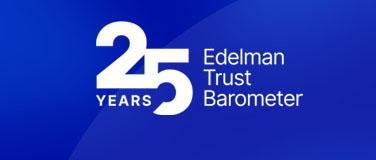Web Summit, first and foremost, is a behemoth. If you’re not familiar with the world’s largest innovation conference, it’s just that. 70,000 people descend on the Altice Arena in Lisbon, Portugal, and the conference’s five custom-built pavilions in search of investors, the latest advancements in technology, and new ideas to take back to their teams across the globe.
Despite its name, it’s not really a Web summit, it’s not even a tech summit. Web Summit is a playbook for how to do business today and how to be at the forefront of what’s next. As such, I walked away with one glaring takeaway: the urgency for change (of any kind) has become penultimate.
No matter what stage or speaker stood before you in blue and purple discotheque lighting, one couldn’t help but sense an undercurrent of urgency. On the Creatiff stage there were desperate pleas for purpose, on the PandaConf stage (the cheeky, irreverent name for the marketing stage), assurance that AI was friend, not foe, and on the Corporate Innovation stage, 15-year-olds doing their darndest to convince the audience to abandon the status quo and do things differently. It was surprising to encounter so much genuine altruism at a gathering typically lauded for its platform to pitch and self-promote.
The theme of the week was stark, as it was simple: Don’t Get Left Behind. While it’s humanly impossible to make it to every session (25+ tracks with 16 sessions/day over 3 days), these were the three most impactful “to-dos” I walked away with:
1. Embrace Gen Z. Embrace Gen Z. Embrace Gen Z.
The power of Gen Z is well covered territory at Edelman. We’ve spent the last year researching this generation’s spending power, and influence over all other generations, and came to Web Summit to showcase what it’s really like to have Gen Z in the C-Suite. In June, we appointed the world’s first ZEO, Harris Reed, to run our Gen Z Lab, a consortium of 150+ Gen Z employees from around the globe to advise clients on engaging their generation authentically.
A proponent for change, Harris told Edelman’s Global Chief Brand Officer Jackie Cooper during the “Here Come the ZEOs” session that brands need to embrace Gen Z, or they’re going to miss the boat, “we are the generation that wants change now.” Jackie acknowledged that in her day-to-day conversations some brands and marketers are still hesitant to engage this generation for fear of being canceled; when asked about this, Harris said that those “assumptions are the problem.”
According to Harris, it’s about asking questions, “The conversation around cancel culture is no longer productive.” Instead he believes that companies should be looking to their Gen Z employees to help keep them accountable, in order to prevent future backlash. In his words, “You can’t get canceled if you’re working with the individuals that you’re creating change for.”
2. Create Positive Impact at Any Cost (even if you have to automate it)
Anyone that’s been to a conference in the last 5 years has heard the word “purpose”. It’s the buzzword du jour, with each utterance becoming more and more passé. At Web Summit, one agency took to the stage to make the case that because of its ubiquity “purpose” had become too fluffy, and performance-minded businesses’ have turned their nose up at it. In its place, they offered Positive Impact.
I applaud the change in nomenclature — it’s hardcore and feels much more tangible (and measurable) than purpose. I was, however, struck by their suggested mode of delivery. An automated tool that translates client briefs into brand purpose strategies. The client is asking for an idea that will increase sales of its sports retail business. Here are four potential strategies that trojan-horse brand purpose into the scope based on pre-selected categories. The audience was rapidly taking notes and photographing the speaker’s slides.
To me, this example demonstrates how desperate our industry is to affect change. We understand our important role in the equation to push clients to do more, to be better. For some though, Purpose hasn’t been convincing enough and as we head into a recession, will become a harder sell. So, we’re taking any means necessary, rebranding purpose as impact, leveraging cutting-edge technology, spending hundreds of thousands of dollars, trojan-horsing purpose into sales strategies, whatever it takes to get brands on board.
3. Our “Intentions” Aren’t Getting Us Anywhere, so Practice Unintentionality
Brian Collins, the founder of the brand experience design company of the same name, came to Web Summit to evangelize “unintentionality”. On stage he theorized, “The opposite of courage is conformity, and our intentions have led us toward convention.” Thus he advised practicing “unintentionality”.
To illustrate this point, the audience was asked to draw two portraits of the person sitting next to us. The first one, with our dominant hand. The second upside down, with our non-dominant hand, and without lifting the pen from the page. Everyone in the audience had more heart for the second drawing, seemingly because (according to Collins) we were released from our expectations to perform. His was a commentary on the standard process yielding the standard result. If its drastic change we desire, it’s likely mere “intentions” won’t get us there. Shake up the process, do things upside down without your dominant hand and see what it yields.
The urgency for change, for a different way is apparent, but even with AI, it's no less daunting. Here’s my advice: start small. Pick one project to experiment with, one project in collaboration with your Gen Z employees, one project where positive impact is the sole KPI, one project to try a different process. Document everything. Share what you learn, and with any luck, you’ll get permission to do it again.
Kelsey Rohwer is Senior Vice President, Global Brand Marketing.




